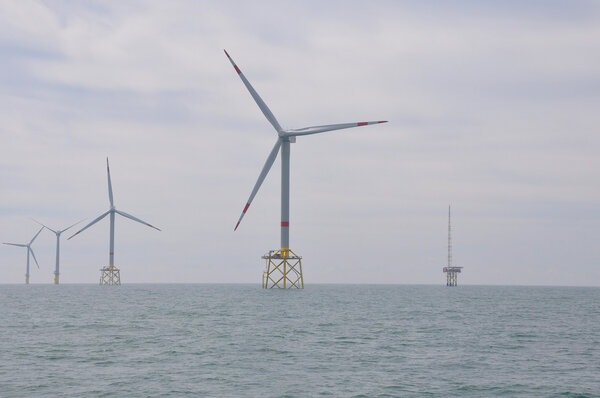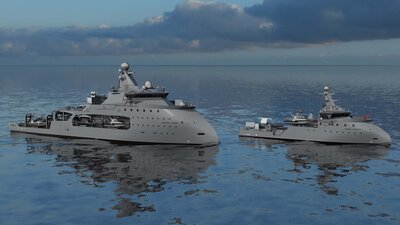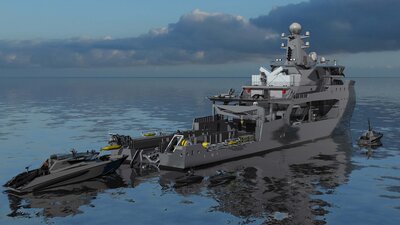Renewable energy generation is increasing
Renewables are established around the world as mainstream sources of energy. Rapid growth, particularly in the power sector, is driven by several factors, including the improving cost-competitiveness of renewable technologies, dedicated policy initiatives, better access to financing, energy security and environmental concerns, growing demand for energy in developing and emerging economies, and the need for access to modern energy. Consequently, new markets for both centralized and distributed renewable energy are emerging in all regions. Wind power has a growing role in meeting electricity demand. Wind power was the leading source of new power generating capacity in Europe and the United States in 2015, and the second largest in China. (Source: Renewables 2016: Global Status Report).
Offshore wind market forecast
The percentage of offshore wind power generation compared to its onshore counterpart is increasing annually. The global offshore wind market is expected to grow by 16% through 2020. At present, the offshore wind activity is characterised by the wind farms being established further from shore, in higher water depths, and the project capacity is increased continually. (Source: Norwegian Opportunities in Offshore Wind, 14 September 2016).
Reducing Levelised Cost Of Energy (LCOE)
To achieve a necessary increase in renewable electricity production, several nations are offering various ways of subsidising. This subsidising has been necessary to take an immature technology to industrialization, and subsidising has been intended to be a temporary solution. In June 2016, several of the major players signed a letter stating that the cost of offshore wind should be reduced to below 80 EUR/Mwh by 2025. A focus area to achieve this goal has been to increase the output from the farm. The methods to achieve this often leads to an increased investment cost. Over the coming years, innovations in combination with economy of scale will lead to a reduction in investment costs.
Further offshore
As of today, most wind power is generated from onshore wind farms. These farms are limited in growth. The offshore wind farms experience steadier and stronger winds, and are therefore able to produce more energy.
Weather
Harsher weather is a natural part of being further offshore. This means that vessels that were able to perform installation and maintenance on near shore farms, can experience a reduced operational window. To be able to build the wind farm efficiently and to keep a good up-time of turbine operation, vessels need to be able to operate in bigger waves and in more wind.
Transits
The number of transits back to shore must be limited when the distances increase. The installation vessels must be able to transport as much equipment as possible in one go. For maintenance operations, limited transits mean that the technicians need to live at the wind farms, either on a platform, a hotel ship or an SOV (Service Operation Vessel). The SOVs can limit their port calls by having space for all the spare parts needed for a longer period, and by facilitating technician exchange by helicopter, or by CTV (Crew Transfer Vessel) if distance to shore is acceptable.
Depths
In the farms further from shore, the water is often deeper. This means that the monopiles need to be larger-sized, or alternative foundations have to be considered. The need arises for other vessel types and tools than what are currently being used.
Larger turbines
To increase the output of a farm, the max rating of each turbine will be increased. In the next 10 years, this will increase to turbines of 10 MW. These units will be physically bigger than the current models, meaning the current installation vessel fleet is unable to install the foundations and turbines. It also means that the spare parts become heavier, so other means of transporting them to the turbines need to be used.
Economy of scale
One of the biggest gain in cost reduction so far have been the supply chain methods and economy of scale. This has been achieved by each farm becoming bigger, and different contract methods. In the near future, the economy of scale will be taken a step further by an even further increase of wind farm sizes, in combination with standardization of interfaces. The standardization means that the same tools, vessels and technicians can work on multiple fields nearby without mobilisation time or additional training.
By doing so, an increase in investment cost can be justified by increased efficiency and thereby reducing the LCOE - levelized cost of energy - an indicator of the energy production cost over the life time at wind farm level.
The knowledge and expertise from the oil and gas sector is invaluable when it comes to reducing costs in wind farms far from shore. Our portfolio also includes products for the future offshore wind farms.



